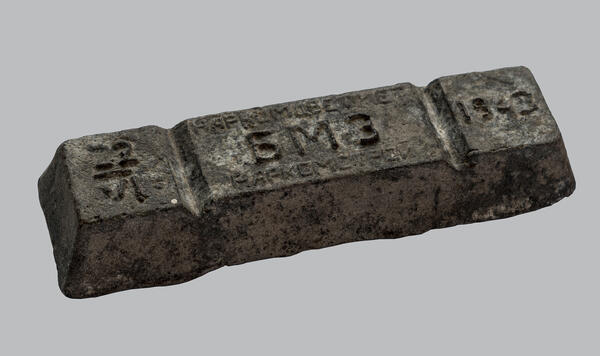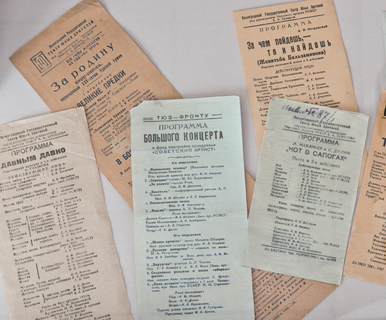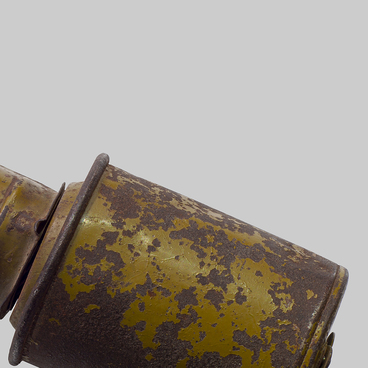On June 22, 1943, the Berezniki Magnesium Plant was commissioned. The first ingot, or billet, of magnesium had a lettering ‘We wish deaths to the German invaders! BereznikI, 1943’.
The decision to found the plant was made by the USSR Economic Council in 1939. When the war with fascist Germany had already engulfed half of Europe, the Soviet Union was in a hurry to strengthen its defense capabilities, since the capacities of conventional magnesium producers - the Dnepropetrovsk and SolikAmsk plants - were not enough.
In April 1941, the technical design and the general estimate for the Berezniki magnesium plant were approved. The actual construction began only on July 22, 1942, under the supervision of the former director of the Dnepropetrovsk magnesium plant, YemelYAn SInchenko.
The war set ruthless limits on equipment, materials and manpower. The entire town was constructing the magnesium plant. Workers and employees, doctors and teachers, schoolchildren and housewives responded to the Communist party call. 500-600 people worked at the construction site every day. Construction workers who arrived here from other parts of the country lived in dugouts, tents and barracks. There was one square meter of housing per person, they rested and worked day and night shifts.
The magnesium plant was commissioned, in fact, being still under construction. The metal was cast practically in the open air - among the construction pits, in the absence of auxiliary workshops, which were commissioned only later on.
During the war, construction of the potash mine in Berezniki was resumed. On May 1, 1944, the mine was launched, and since then the magnesium plant has been receiving local raw materials.
After the end of the war, 1,018 workers of the plant were awarded the medal ‘For Valiant Labor during the Great Patriotic War of 1941-1945.’ A total of 1,883 people worked at the plant that time.
With the end of the war, a large-scale reconstruction of the enterprise started. In 1949, KlAvdiy TsirEnshchikov, the first builder of the SolikAmsk magnesium plant, Hero of Socialist Labor, became the new director of the plant.
In 1954, under his supervision, the first stage of the renewed plant was launched, work began on the creation of the country’s first titanium production, and four years later the plant received the first titanium. In 1963 the enterprise was renamed into BereznikI titanium and magnesium integrated plant.
The metal output at the integrated plant was constantly increasing along with productivity and improvements. In January 1973, the Ivak production site of the AleksAndrovsky district and the SolikAmsk magnesium plant became part of the enterprise.
The decision to found the plant was made by the USSR Economic Council in 1939. When the war with fascist Germany had already engulfed half of Europe, the Soviet Union was in a hurry to strengthen its defense capabilities, since the capacities of conventional magnesium producers - the Dnepropetrovsk and SolikAmsk plants - were not enough.
In April 1941, the technical design and the general estimate for the Berezniki magnesium plant were approved. The actual construction began only on July 22, 1942, under the supervision of the former director of the Dnepropetrovsk magnesium plant, YemelYAn SInchenko.
The war set ruthless limits on equipment, materials and manpower. The entire town was constructing the magnesium plant. Workers and employees, doctors and teachers, schoolchildren and housewives responded to the Communist party call. 500-600 people worked at the construction site every day. Construction workers who arrived here from other parts of the country lived in dugouts, tents and barracks. There was one square meter of housing per person, they rested and worked day and night shifts.
The magnesium plant was commissioned, in fact, being still under construction. The metal was cast practically in the open air - among the construction pits, in the absence of auxiliary workshops, which were commissioned only later on.
During the war, construction of the potash mine in Berezniki was resumed. On May 1, 1944, the mine was launched, and since then the magnesium plant has been receiving local raw materials.
After the end of the war, 1,018 workers of the plant were awarded the medal ‘For Valiant Labor during the Great Patriotic War of 1941-1945.’ A total of 1,883 people worked at the plant that time.
With the end of the war, a large-scale reconstruction of the enterprise started. In 1949, KlAvdiy TsirEnshchikov, the first builder of the SolikAmsk magnesium plant, Hero of Socialist Labor, became the new director of the plant.
In 1954, under his supervision, the first stage of the renewed plant was launched, work began on the creation of the country’s first titanium production, and four years later the plant received the first titanium. In 1963 the enterprise was renamed into BereznikI titanium and magnesium integrated plant.
The metal output at the integrated plant was constantly increasing along with productivity and improvements. In January 1973, the Ivak production site of the AleksAndrovsky district and the SolikAmsk magnesium plant became part of the enterprise.



